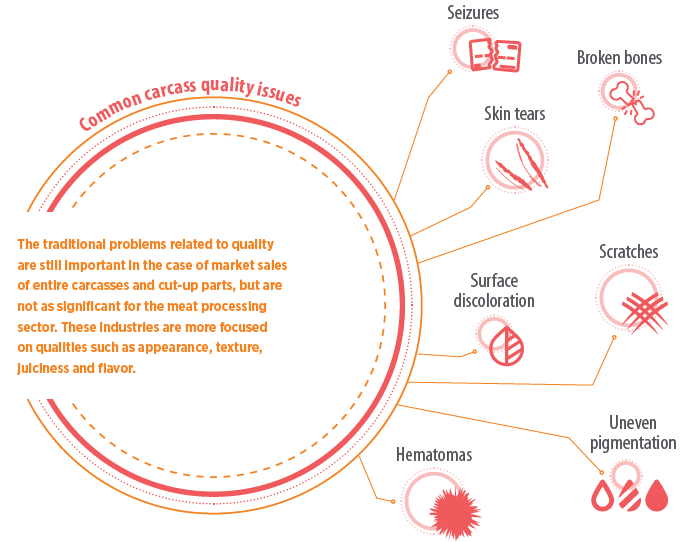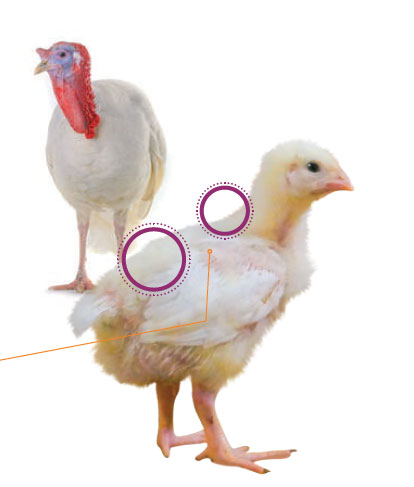Increased breast abnormalities
RECOMMENDED

In recent years, the poultry meat markets have shifted from predominantly a whole poultry-based product to a highly diversified industry focused on cut-up parts, boneless meat and ready-to-eat processed products.

Increased breast abnormalities
The tremendous changes in the growth of birds have been achieved mainly by inducing: Hypertrophy -cellular enlargement- Hyperplasia -cellular proliferation-, to a lesser extent, also reducing the rate of protein degradation during muscle development
Consequently, compared to unselected birds, the breast muscle fibers of fast growing birds are larger, both in diameter and length, in addition to having an increased glycolytic metabolism and a higher proportion of white muscle fibers.
Increase in fiber mass
Unfortunately, increased fiber mass is associated with low capillarity, which leads to insufficient supply of oxygen and nutrients to muscle cells. It can also promote the inappropriate release of metabolic products, leading to dysregulation of homeostasis and consequently other cellular dysfunctions. These physiological changes are associated with an increase in breast meat abnormalities, such as:
Deep Pectoral Myopathy (DPM)

In addition to DPM, producers observe similar problems in the dorsal musculature in the upper back
The incidence of DPM currently reaches values of up to 1-2% in slaughtered birds weighing more than 3 kg. Dorsal Myopathy (DM) can exceed this value, especially in winter when temperatures allow faster growth.
Consequences of intense flapping
Green muscle disease
The breast musculature in green muscle disease presents hemorrhages with reddish-brown inflammatory lesions in the early stages of development that later turn greenish.
Subscribe now to the poultry technical magazine